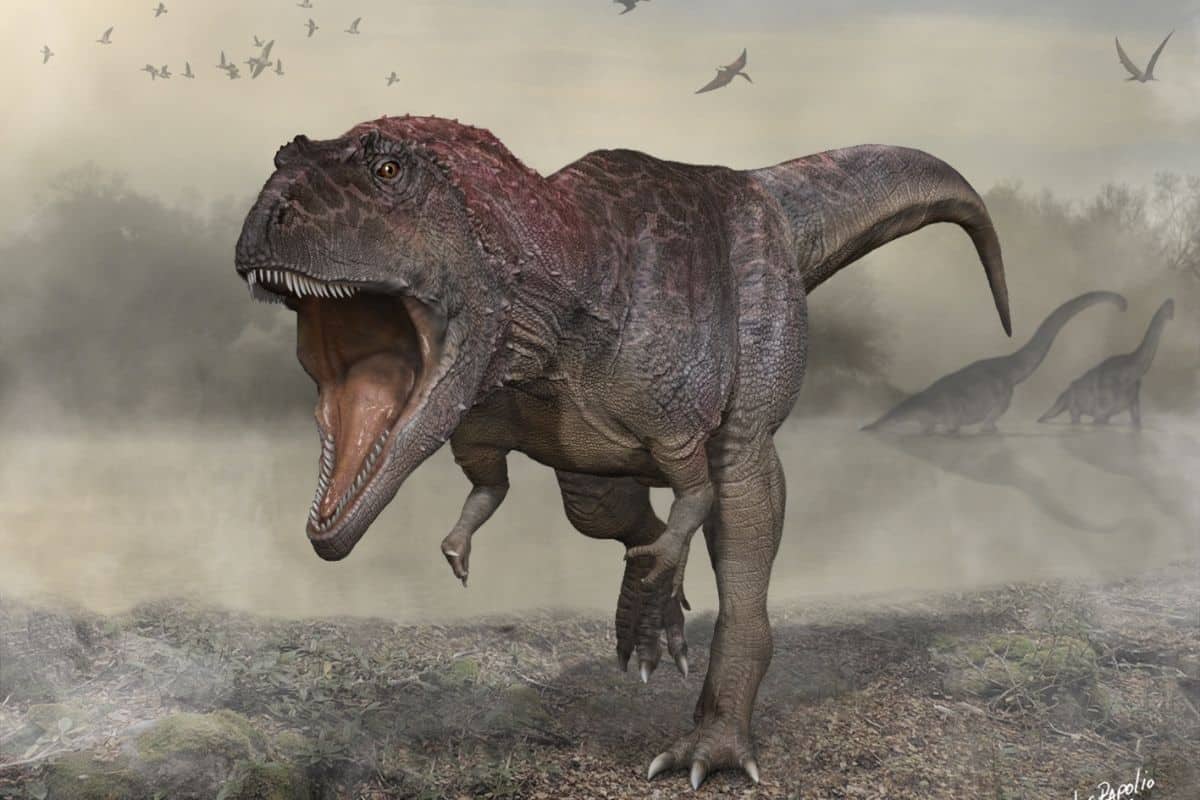

For years, researchers have puzzled over why the mighty and fearsome T.rex was equipped with those wimpy short arms. But a newly unearthed fossil lifts a small corner of the veil.
Of all the dinosaurs that ever roamed the earth, the predatory one is Tyrannosaurus Rex probably the best known. Growing up to thirty feet long with sharp teeth and strong jaws, the fearsome dinosaur could completely crush the bones of prey. The only thing that is a little strange about this terrifying dino are his crazy short arms. Scientists have long wondered how such a large predator could have had such clumsy arms. But now it turns out that the T. rex wasn’t the only one.
Discovery
In South American Patagonia, researchers have unearthed the fossilized remains of a giant, carnivorous dinosaur. The dino, that Meraxes gigas has been named and to the group carcharodontosauridae belonged to, was about 45 years old when he died, reached at least 11 meters in length and weighed more than four tons. Moreover, it appears that the skull of M. gigas was decorated with combs, grooves and small horns, decorations that the dinosaur may have used to attract mates. But the real surprise came when the researchers took a closer look at the rest of the skeleton. Because this dino also turns out to be equipped with disproportionate, short arms – just like the T. rex†

Artistic impression of Meraxes gigas. Image: Jorge A Gonzalez
The researchers emphasize that the M. gigas and T. rex are not related to each other. Not only died M. gigas nearly 20 million years before the T. Rex the light of day was already out, on the evolutionary tree both dinosaurs are miles apart.
no family
“There is no direct relationship between the two,” said study leader of the study Juan Canale. This means that the short arms cannot be inherited. In short, although both M. gigas if T. Rex large and carnivorous dinosaurs, they were not related. The short arms have thus evolved completely independently in both dinosaurs.
Theories
Meanwhile, there are already a lot of theories about the short arms of the T.rex in circulation. One suggests the forearms were useless, while the other hypothesizes that they may have been vital during the hunt. Yet another thinks that the T. Rex originally had much longer arms, but that these have been shrunk to prevent them from being accidentally or deliberately bitten off by others of their own kind.
Function
While the researchers aren’t exactly sure which of the proposed theories is true, at least the theory that the arms were useless could go straight into the trash. The fact that two dinosaurs, who were not related, both had short arms, suggests that they really had a function. Apparently it was beneficial for some reason. “I’m convinced those disproportionate little arms served a purpose,” said Canale. “The newly discovered skeleton shows large muscle insertions and fully developed shoulder girdles, so the arm had strong muscles. This means that the arms did not shrink because they were useless. The more difficult question, however, is what exactly those short forearms were for.”
Pairing or for support
According to the researcher, it is also unlikely that the arms were useful for hunting. “The dinosaurs probably used their heads for that,” said Canale. “So I tend to think that they use their small, short arms in other types of activities. Perhaps they came in handy during mating and could hold the female with them. Or maybe they served as support to get back up after a short break or fall.”
The last word on the wimpy short arms of both the T. Rex if M. gigas has certainly not been said. Investigation M. gigas therefore continues. The researchers can’t wait to study what else this fossil, which is in excellent condition, will reveal.
Source material:
†Why does the T-Rex have tiny arms? An unrelated fossil could help us find out— CONICET (via Scimex)
Image at the top of this article: Carlos Papolio